If you’re new to wine tasting, it can be easy to feel like a fish out of water. Your tasting companions are rattling off the different tasting notes that they are experiencing in each glass, while you aren’t sure what to say other than that it tastes like . . . wine.
In part, we’re each born with a level of taste perception – but wine tasting is also a skill, and like any other skill, you can certainly improve with practice. By developing your wine tasting palate , you will gain a deeper appreciation for the art of winemaking, and you’ll find that you enjoy a great glass of wine in a whole new way.
Read on to learn some of our top tips to level up your wine tasting game and elevate your next wine tasting experience.
Develop Your Smell & Taste Vocabulary
Did you know that you actually can’t develop your tasting palate by taste alone? Approximately 75-90% of what we commonly refer to as taste is actually smell, so it’s important to develop your sense of smell alongside your sense of taste to holistically enhance your wine tasting experience.
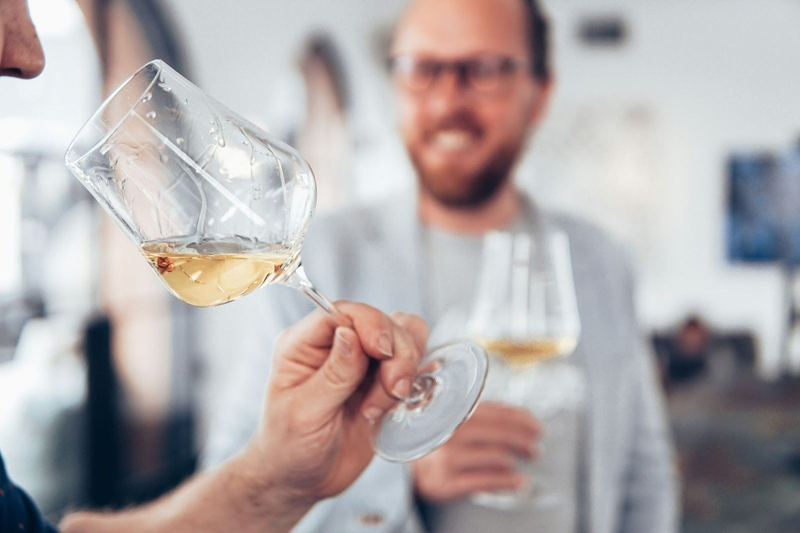
Logically speaking, it’s nearly impossible to fully describe a smell or a taste that you’ve never experienced. After all, how can you identify something with no basis of what it is?
To properly develop your tasting palate, you need to broaden your sense horizon. By being intentional about the things that you smell and taste in your day-to-day life, you’ll gain a better understanding of how to identify an aroma or flavor in something else, such as wine.
Wondering where to begin? Here are a few ideas:
- Go to the farmer’s market and smell and taste different produce – specifically fruits. Take note of what makes them distinct from each other. Isolate the details of the scent or taste – is it sharp? Sweet? Acidic?
- Sample perfume or cologne, paying attention to the specific notes.
- Go for a walk in nature , observing the different scents that you come across. What do different flowers smell like? How are the fields different from the forest?
- Journal . Keep a notebook or journal with you to record your flavor and aroma experiences as you go.
Additionally, researching common scent and taste descriptors will help you build a vocabulary for when it comes time to put your palate to the test. Tools such as wine aroma and wine flavor wheels can be invaluable on your journey to develop a strong wine tasting palate.
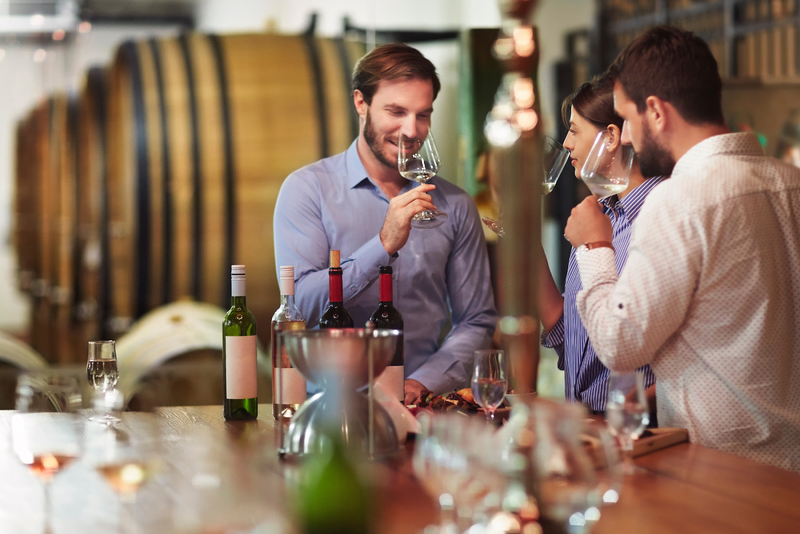
Master the Method
When you’re learning how to properly taste wine, it helps to have a tasting routine to engage your brain and get you in the right mindset. Here’s how to work your way through the senses and do it like a pro:
Sight
First things first: what does the wine look like? This step in the wine tasting process doesn’t need to be lengthy – and as you become more comfortable with wine tasting, you’ll likely do it without even thinking about it – but it’s important all the same.
What color is the wine? What is its opacity like? Give the glass a light tilt so that you’re able to get a better idea of its true color, not just the concentrated center that you see when looking down into the glass.
Aroma
Next, smell the wine. Begin with an introductory sniff to experience the top notes of the wine, then swirl the wine in the glass to release and separate the aroma compounds. Close your eyes, put your nose into the glass and take a deep breath.
Think back to when you were working to develop your sense of smell. What is the aroma that you’re currently experiencing similar to? What do you notice? Wine can carry thousands of aroma compounds, so don’t expect to be able to identify everything, but pay attention to what stands out to you. Think in broad categories – do you smell fruits, herbs, or floral notes?
Taking the time to actively engage your sense of smell is vital to properly tasting the wine in your glass.
Taste
Now, it’s finally time to taste the wine. Take a small sip and swish it around your mouth so that it coats the entire surface area – from your tongue to your cheeks to the roof of your mouth. Then, slightly open your mouth and breathe in. This may trip up new wine drinkers – wine tasting truly is a practiced art! – but by breathing in as you taste, it aerates the wine and allows for the flavor to fully open.
Again, ask yourself – what do you taste? What flavor profiles stand out to you? What notes are you able to detect? How does what you smelled compare to what you taste?
Pause & Think
Give yourself a moment to pause and evaluate what you’ve just experienced. What was the texture like? Did you feel that the wine was balanced, or did it lean too much in a certain direction? Was it too acidic? Too tannic?
Conclusion
Now that you’ve fully tasted the wine, it’s time to ask yourself – did you like it? Why or why not? What stood out to you about the wine – positive or negative?
Don’t overthink it or feel as though you’re doing it “wrong.” There’s no such thing! At the end of the day, the most important thing is whether or not you liked the wine and if drinking it is an enjoyable experience for you personally.
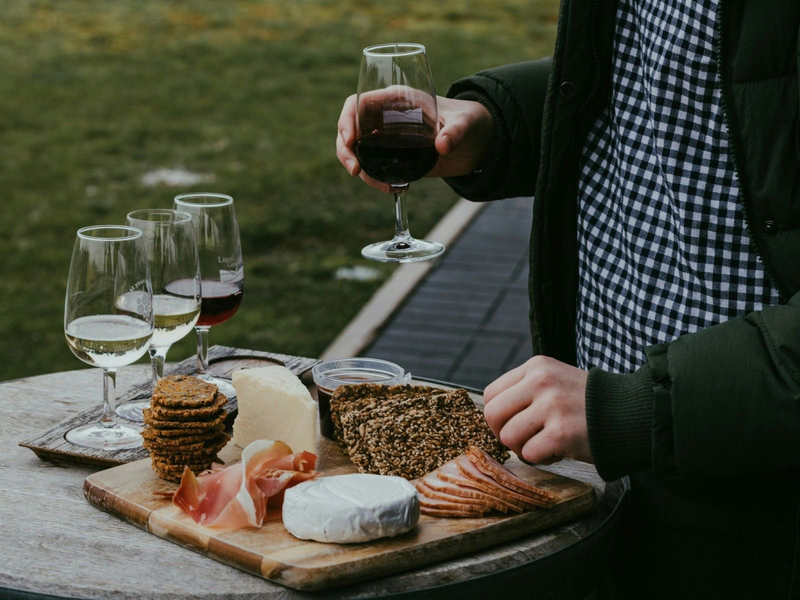
Pair Wine & Food
One of the most enjoyable parts of drinking wine is pairing it with great food; and food and wine pairings are a fantastic tool for helping you develop your wine tasting palate. Food can change the taste of wine, bringing out different notes and aspects you might not have noticed if drinking the wine alone, which will help you hone in on the wine’s details.
Pay attention to the food’s flavor profiles – salt, sweet, acid, fat, spice, and bitter – and see how they impact the taste of the wine. Do they bring out a new flavor in the wine? Complement it? Contrast it?
The best way to learn is to experiment. Try out different food and wine pairings to discover what you enjoy, what works, and what enhances your wine tasting experience. While this can certainly be done at home, will give you access to professionals who can guide you through the science and art of wine and food pairing, recommending tried and true pairings, and give you guidelines for your future wine and food adventures at home.
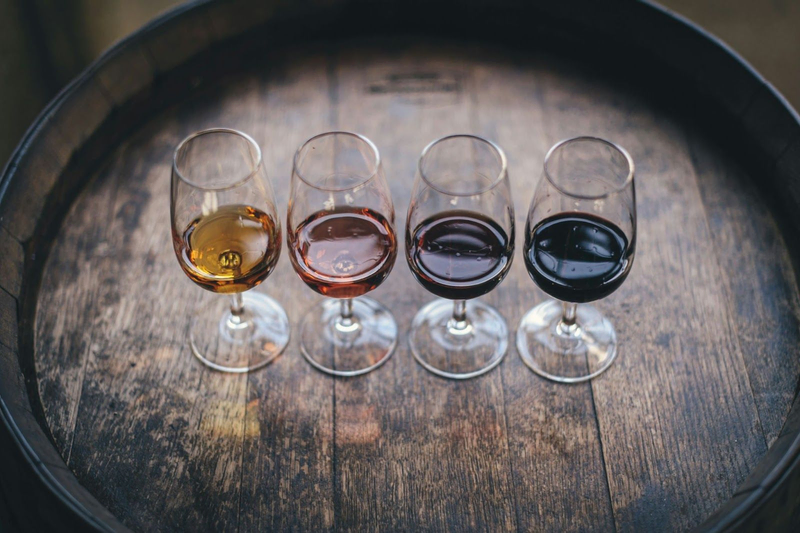
Try Different Wines
It’s impossible to properly develop your wine tasting palate without giving yourself exposure to different types and styles of wine. The more wine that you drink, the more clearly you’ll be able to articulate what you’re experiencing because you’ll have a wider range of knowledge and memory to work off of.
Sample different varieties of wine and compare the difference. A rich Cabernet Sauvignon, an elegant Pinot Noir, and a delicate Rosé all have their own unique flavor profiles and special attributes.
We also recommend that you try the same kind of wine from different growing regions, or the same variety made in different styles, by tasting them at the same time, side-by-side. For instance, try both a Californian Sauvignon Blanc and a New Zealand Sauvignon Blanc or a barrel fermented Chardonnay next to one made in stainless steel. While both are the same kind of wine and might have similarities, there will also be large differences that you can more easily pinpoint when you’re able to compare the two next to each other.
At V. Sattui, we have an uncommonly diverse selection of wine varieties. If you’re hoping to expand your wine tasting palate, our expansive portfolio of award-winning wines, available only at the winery or through our wine club, is the perfect place to start. From delicate whites to robust reds, rare dessert wines and more – the opportunity to discover new and exciting flavors is almost endless.
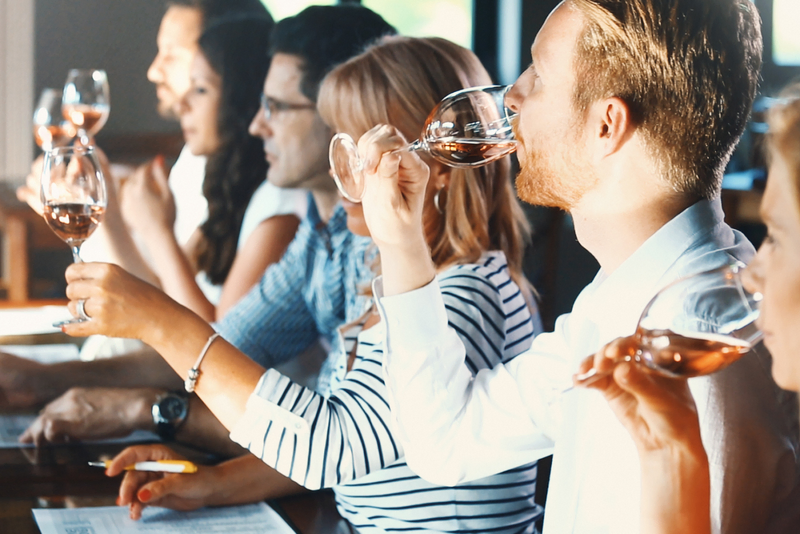
Vary Your Tasting Experiences
The more practiced you become, the more confident you’ll feel when tasting wine. One of the best ways to build that confidence is to try a variety of different tasting experiences instead of just staying in your comfort zone.
At V. Sattui, we offer a wide variety of guided wine tasting experiences, certain to help you expand and develop your wine tasting palate. Our Premier Tastings feature flights of our highly acclaimed estate wines, our Bubble Bar Tastings highlight our Méthode Champenoise and frizzante selections, while our Reserve Tower Tastings spotlight our most coveted reserve and vineyard-designated wines. Our Member’s Cellar Club even offers barrel tastings – sampling young developing wines directly from the cask – a truly unique, educational experience you won’t want to miss.
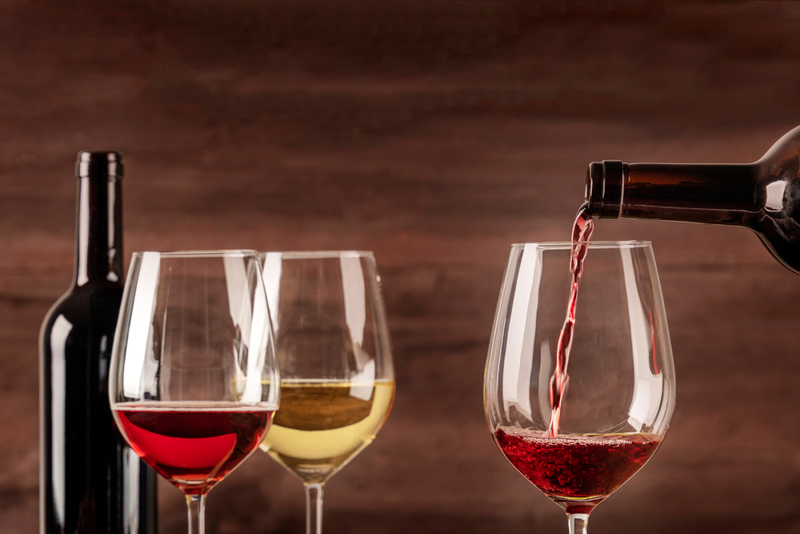
FAQs: How to Develop Your Wine Tasting Palate
Learning how to develop your wine tasting palate takes time. Here are a few of the most common questions that you might come across.
What’s the best way to develop your wine tasting palate?
The best way to develop your wine tasting palate is to expose yourself to a wide variety of wines. Pay attention to the details – the differences and similarities between them. Additionally, working to improve your smell and taste awareness in your everyday life will help you discern the taste of wine more clearly.
What foods go well with wine?
Different wines pair well with different foods. For example, red wines pair well with rich foods such as meat and cheese, while white wines pair well with lighter foods, such as seafood or salad.
What does wine taste like with different foods?
Different foods impact wine differently. Food can bring out contrasting or complementary flavors in wine depending on the pairing.
Where can I go to try different wines?
V. Sattui is the best winery in Napa to experience a broad variety of wines in a single place.
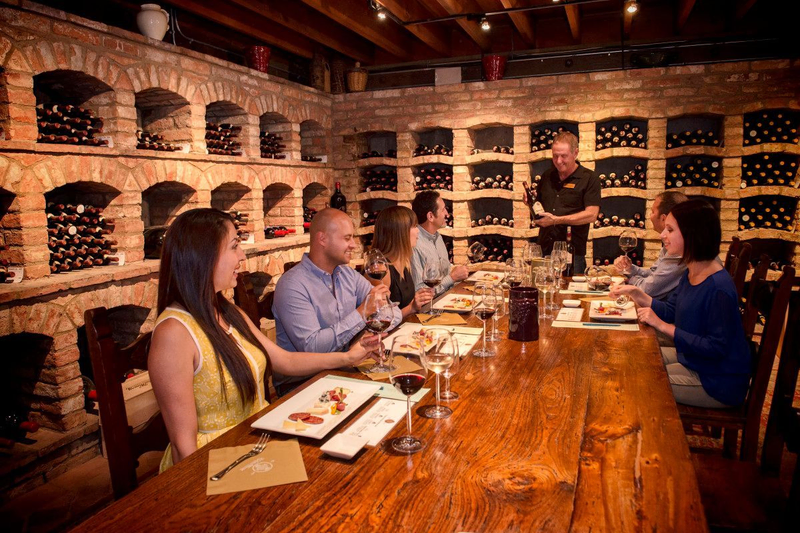
V. Sattui Napa Wine Tasting Experiences
Are you ready to put your wine tasting skills to the test? Practice makes perfect, and there’s nowhere more perfect to practice than V. Sattui. With our wide range of wines and tasting opportunities, you’ll develop your palate in a new and deeper way alongside our professional tasting advice and knowledge.
Come experience the best that Napa Valley has to offer at V. Sattui – .